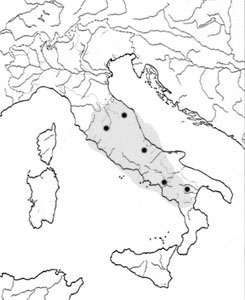Very surprising is the discovery of the species in a brackish spring in the north-west Sahara (Morocco) (Dumont & Van e Velde, 1975). Halicyclops troglodytes is a stygobitic species which, with the exception of the Morocco material, is known only for subterranena habitats, along the coasts which testifies its recent (thalassoid) origin.
Eucyclops serrulatus is a cosmopolitan species, widely distributed in different fresh epigean (rivers, lakes, springs, ponds) and subterranean (caves, wells, hyporheic) environments. As regards Italy, E. serrulatus is known both from surface and ground waters, being most common in the southern Apennines.
Described by Fischer (1853) to accomodate material from Russia, Paracyclops fimbriatus is a cosmopolitan species, widely distributed in different fresh water habitats (both surface and subeterranean). The species has been variously reviewed by numerous authors (Lindberg, 1941;Dussart, 1969; Einsle, 1971; Karaytug & Boxshall, 1996). Paracyclops fimbriatus is very common also in Italy, both in epigean and subterranean habitats (Alps, apennines, Sicily, Sardinia).
Diacyclops zschokkei is a stygophilic species, widely distributed in subterrean environments of Europe. As regards Italy, it has been reported only for a few localities (caves and wells) of the Apennines and Sardinia.
Described by Pesce & Galassi 1987 to accomodate material from wells in central Apennines (Emilia-Romagna), Diacyclops paolae is a stygobitic species belonging to the "Diacyclops languidoides- group". The species is at present andemic to Italy [Emilia Romagna (wells), Abruzzo (springs), Calabria (caves)].
Diacyclops clandestinus, belonging to the "Diacyclops languidoides- group", is widely distributed in subterranen habitats (caves, springs, interstitial) and in ponds. Its geonemy includes Europe, Ukraine, Turkey, Syria, Lebanon and Japan. In Italy Diacyclops clandestinus is present both in the Alpine and Apenninic provinces, but some records of this species could be related to Diacyclops paolae (Stoch, in litt.).
[Copepods Web Portal] [Feedback] [Previous Page]
|

